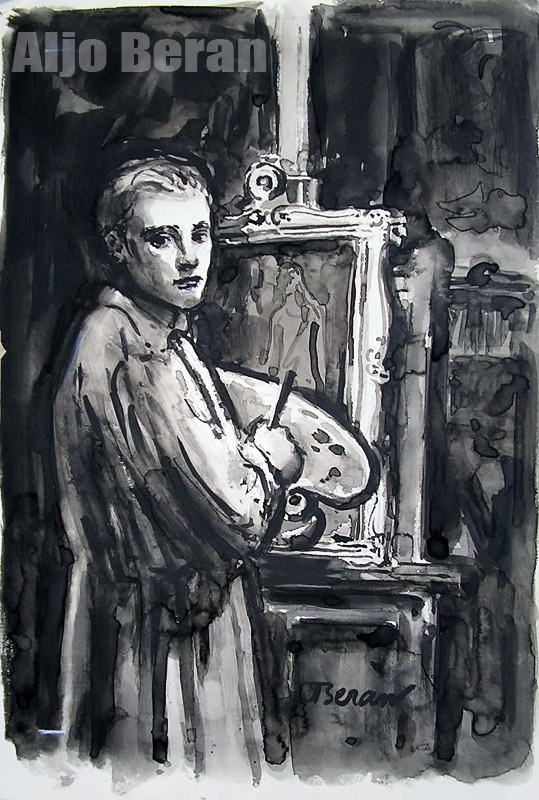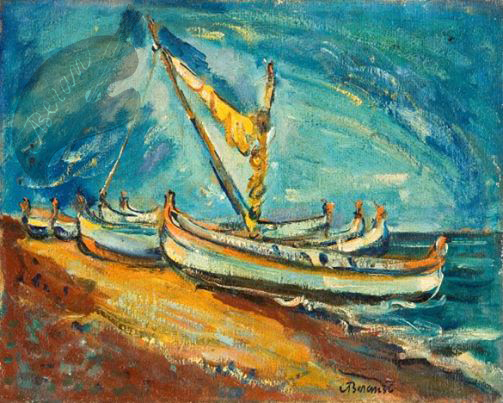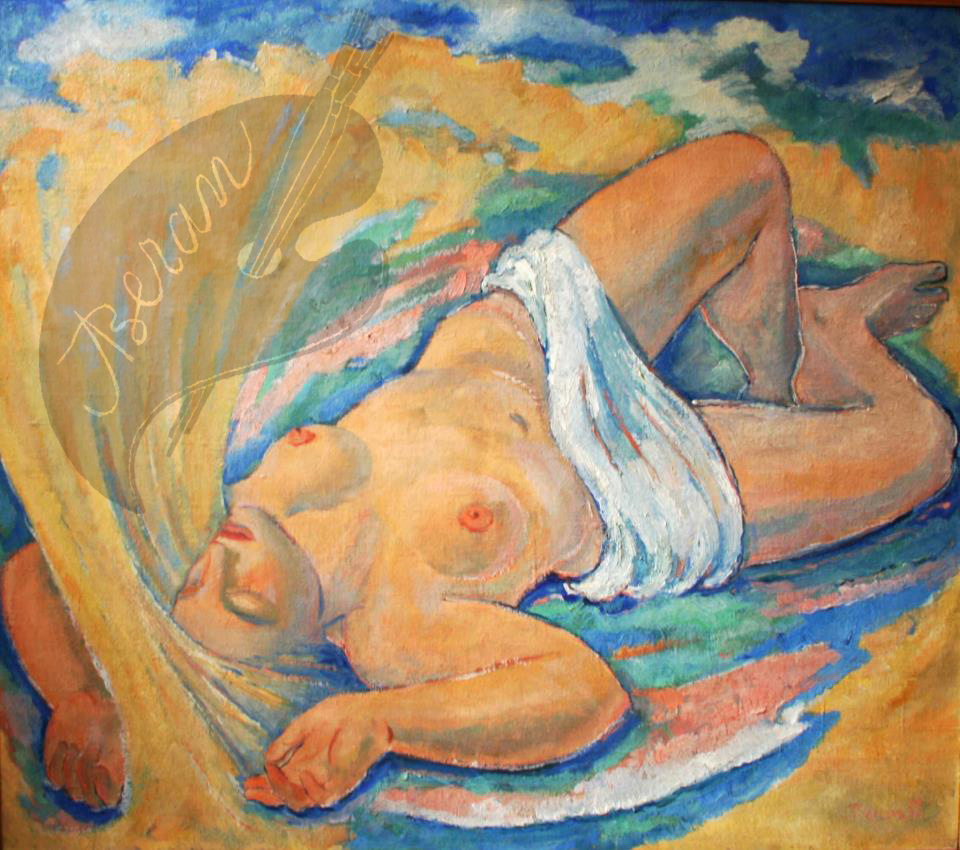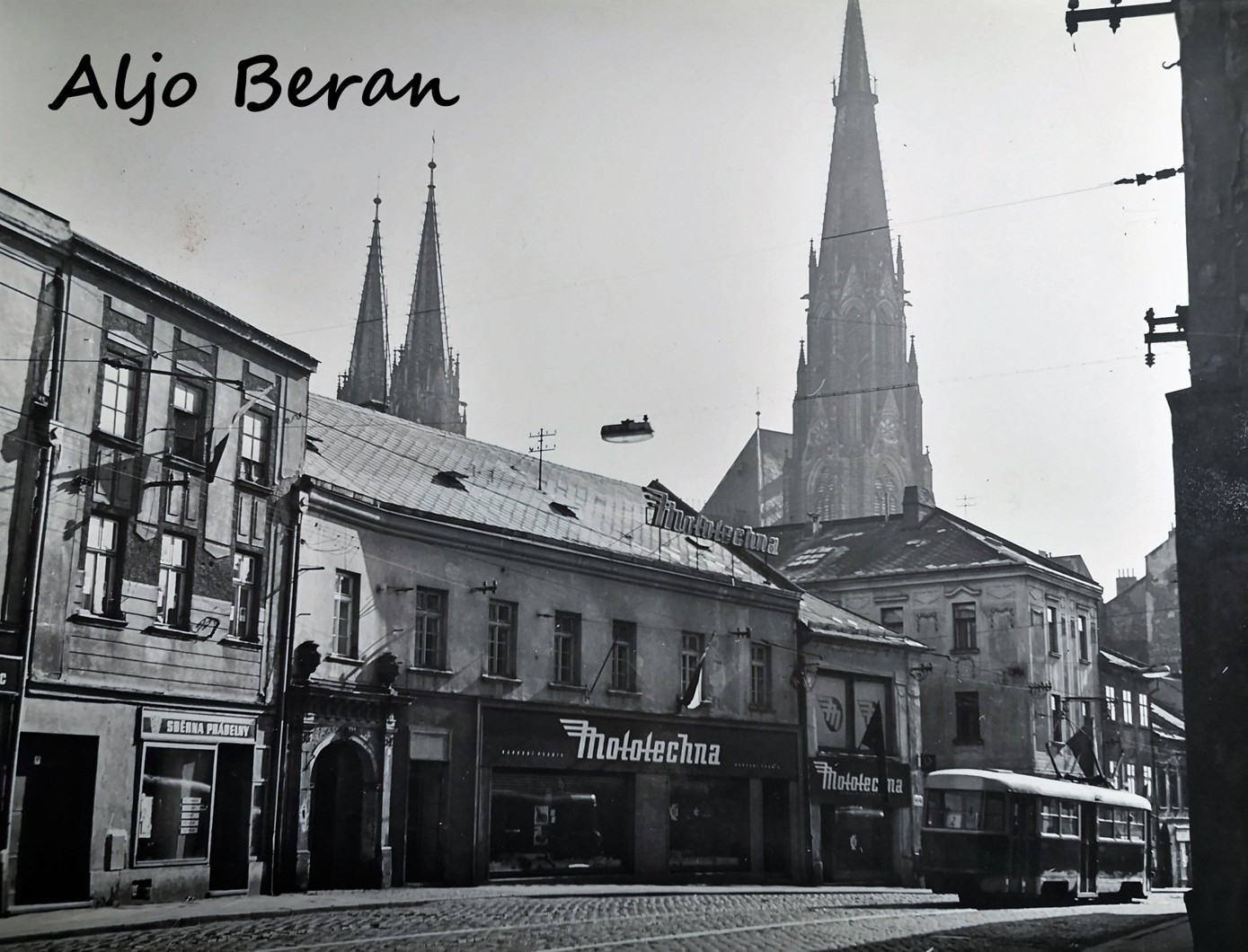
Aljo Beran
* 15 April 1907 - Krakow +22 October 1990 - Olomouc
Painter, graphic artist, university teacher.

Aljo Beran was born in Krakow in the family of an officer, a builder of military facilities. He graduated from Olomouc secondary school, then he studied architecture in Brno, the Academy of Arts, Architecture and Design in Prague and the Faculty of Philosophy in Prague. After his studies, he taught at several Moravian secondary schools. Together with Professor J. L. Fischer, he founded Palacky University in Olomouc in 1946, where he worked at the Department of Art Theory and Education for many years, as the head of the department. He is the author of the university logo, which is still used today, and a portrait of the first university rector. He was a member of several art associations, such as the Group of Fine Artists in Brno, the Moravian-Silesian Association of Fine Artists, and the Group of Olomouc Artists, whose chairman he was from 1937-1947. From 1977 until his death, he was the honorary chairman of the Club of Friends of Fine Arts in Olomouc. He also collaborated with his brother, the publisher Čeněk Beran, who was executed by Nazis for resistance activities during the Protectorate of Bohemia and Moravia (Protektorat Böhmen und Mähren, 1939 - 1945). Aljo Beran gave artistic form to books published in his brother's publishing house by authors, such as Jaroslav Koudelák, František Nechvátal, Otto F. Babler, Petr Bezruč, Frantisek Kožík and many others.
After his studies in Prague, he started working in regional conditions, where strong conservatism was still dominant in the 1930s. He strongly opposed this and was aware, throughout his life, of the possibility of the region as a unique and specific cultural centre. Therefore, he decided to work in his beloved Central Moravia and especially Olomouc. It was a service not only artistic, in the sense of one's own work, but also organizational and pedagogical. For ten years (1937 to 1947) he led the Group of Olomouc Artists, he was also a co-founder of the renewed University in Olomouc, for which, in 1947, he made the graphical design, including the university logo and insignia.

When the graphic design of Palacky University in Olomouc was to change recently and a new design won the competition, an unprecedented thing happened. The academic community, especially the students, opposed the new design and decided to return to the original Aljo Beran graphics. He would certainly be happy that his artistic idea, his concept of university symbolism, is still alive, even after 70 years.
Aljo Beran's artistic vision had several sources. On one hand, it was the respect for the visual representation, also supported by his studies of architecture in Brno, on the other hand, it was also free imagination and symbolism brought to abstraction in the 1960s. He thematically covered several areas, which developed parallelly during more than sixty years of artistic as well as exhibition activities.

Olomouc became his lifelong love, in all its forms. He was aware of its uniqueness. Once, when he returned back to Olomouc from Florence/Firenze, he said in astonishment: "It was there that I suddenly found out how beautiful Olomouc is."
He needed to see different seas to find out that the region around Olomouc was the right one. It was interesting how, as a renowned artist and a university teacher, he was still curious, not only about the work of other artistic generations, but also about the spiritual, current events of his time.
This is perhaps the most important thing that is still alive in his work scattered in various collections in the Czech Republic and abroad, and what his students also remember. This permanent curiosity, which, however, is not self-serving, but also has the unappreciated sense of responsibility.
Examples of Art Work
Aljo Beran and Olomouc
Olomouc was a lifelong inspiration for Aljo Beran, the theme of the Hana metropolis never became ordinary and offered him the opportunity to constantly look for new perspectives or nooks and try different painting approaches. Aljo Beran travelled to a number of countries, so he could compare, and Olomouc always came out of the comparison as a completely unique and distinctive place. Throughout his life, he actively participated in the cultural events of the city and opposed insensitive urban interventions in its character. In 1937, he co-founded the Group of Olomouc Artists and since 1977 he was the honorary chairman of the Club of Friends of Fine Arts in Olomouc. His pedagogical activities were also significant. From 1947 to 1972 he worked at the Department of Art Theory and Education, Faculty of Arts, Palacky University, where, in 1955, he was awarded the title of research associate professor (docent) for graphics, painting and drawing. An important fact played also Aljo Beran's feeling of service to the city.
Portrait and self-portrait
Aljo Beran's interest was not a portrait and a self-portrait, as a specific form of a human face, it did not dominate his work. Nevertheless, he created a number of portraits, as well as self-portraits, during his long artistic life. He portrayed mainly those with whom he had a personal relationship, especially family members and close friends. The so-called fictional portraits also played a role in his work, in which he symbolized certain moods of human faces, and undoubtedly also an ideal of beauty, whether they were loving couples or lovely girl faces. An exception is, in a way, the official portrait of the first rector of the renewed Palacky University, the philosopher J. L. Fischer. Self-portrait, a common topic for most artists, also meant for Aljo Beran a certain analysis of himself. A certain reflection, not only of one's own image, but also of the overall transformation of the personality. This is very clearly evidenced by two self-portraits which he created over a period of more than 50 years. The one from 1937 was unfortunately stolen.

A pair of all forms
The theme of pairs was very close to Aljo Beran throughout his work, in some periods even dominant. The width of this theme allows the painter a very different approach, from the romantic concept of lovers with an open view of the future, to, melancholy, a mysterious concept expressed by closedness of loving couples in their unique space. The topic also offers a number of technical processing options. In Beran's work we can find pairs processed, among other things, by tempera, oil, in the form of a monotype, very often in the form of various graphic techniques, such as lithography, dry point needles and the like. In addition to changes in technique, he also changed the degree of stylization of the characters themselves. In the course of Beran's long-term work, we have the opportunity to meet various forms of this topic.
Travels
For Aljo Beran, his journeys meant not only getting to know foreign regions and their artistic design, but constantly verifying the values of the domestic environment, especially the city of Olomouc. He travelled almost all over Europe and was interested in both the landscape and the architecture and monuments. In his youth, he carefully recorded, in small drawings, places that fascinated him, later in his life, he tried to keep in his memory a certain essence of his travel experiences. The range of topics is very wide and almost boundless. He was enchanted by the sea all his life, in all its forms. From the calm Adriatic Sea around the island of Korčula in Croatia through the dark Black Sea near Sevastopol to the dramatic Rügen in Germany, to the stormy Atlantic of Bretagne. He was also captivated by ancient monuments of Rome, Renaissance Florence, or the Costa Brava with Barcelona.
Landscape

For Aljo Beran, it was not one landscape, one of its forms, that he would devote himself to throughout his life. He was always fascinated by something new and unique in the countryside he visited. Of course, the surroundings of Olomouc affected him. The region of Hana with the dominant of Svatý Kopeček (Holy Hill) and the Hrubý Jeseník Mountains, where he regularly spent his holidays in his cottage. Especially there, nature was represented by a bouquet of the most ordinary field flowers. Throughout his life, however, he was attracted to the seaside regions. He was happy to compare their different forms. In his youth, it was the Atlantic in Bretagne, France and the Adriatic in Korčula, Croatia, later, the Black and the Baltic Sea. He was fascinated by the romance of harbours, fishing nets and distant horizons. It was a certain contrast to his domestic flat region of Hana, or the dramatic Malá Fatra Mountains in Slovakia.
Sketch
A sketch, a drawing record, did not mean a finished work of art for Aljo Beran, nor did he ever present it publicly. It was a certain intimate sphere for him, in which he discovered and confirmed his ideas, both thematic and sometimes formal, compositional and even technical. For example, when working on monotypes, several preliminary versions always worked essentially as a sketch or a drawing. In a way, a number of sketches foreshadowed the final form of the work of art. Only, after the author's death, were some of these drawings presented to the public, and so their publication pointed out the author's excellent drawing ability.
Applied Art
Applied art was a logical part of Beran's artistic expression. It was not only ex libris, which he devoted himself to and with his unique concept he became one of the leading European authors, but also New Year's cards, various addresses, announcements and other various forms of applied graphics. In 1946, he created a logo for the renewed Palacky University in several formal forms, which is still used today. In May 1945, he also designed the first stamp for the city of Olomouc in the liberated homeland. He illustrated and graphically edited a number of books, especially in the publishing house of his brother Čeněk Beran. He also created monumental coloured stained-glass windows symbolizing various forms of communication.
EX LIBRIS
During his life, Aljo Beran often returned to Ex libris, using mainly lithography, linocut and dry point techniques. Beran did not understand Ex libris only as an artistic task, but in the creation, he mainly dealt with the question of the personality and character of a particular book owner. While creating one, he did not rely on superficial attraction by simply indicating the name of the owner of the books. The themes show a deeper understanding of a given personality with the attributes of a specific life story and personality of a specific person. In his Ex libris we can find hints of portraits, heraldic symbols of professions and interests and, last but not least, a hinted life story, which might be for an example a boat tossing on the waves of a stormy sea.

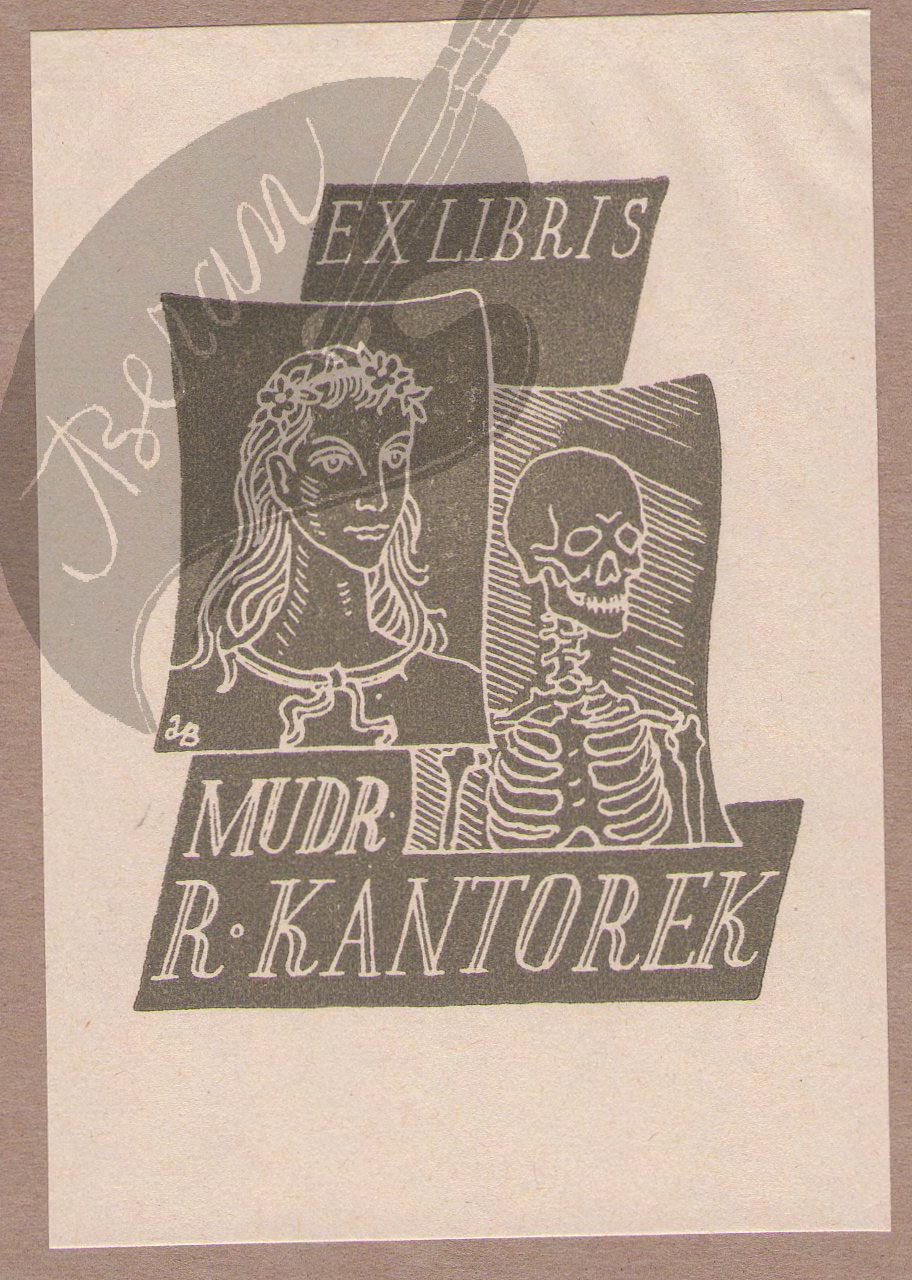
Photos
Aljo Beran often took photographs of anything that caught his attention, he further used the photos to make his sketches, graphics and canvases. Thanks to his sense of composition, a large number of shots were created, which are not only a proof of his time, but also a proof of the author's talent for art photography. In his pictures he captured the everyday and unusual days of Olomouc and its surroundings as well as the beauties of nature and the cities he visited during his travels.

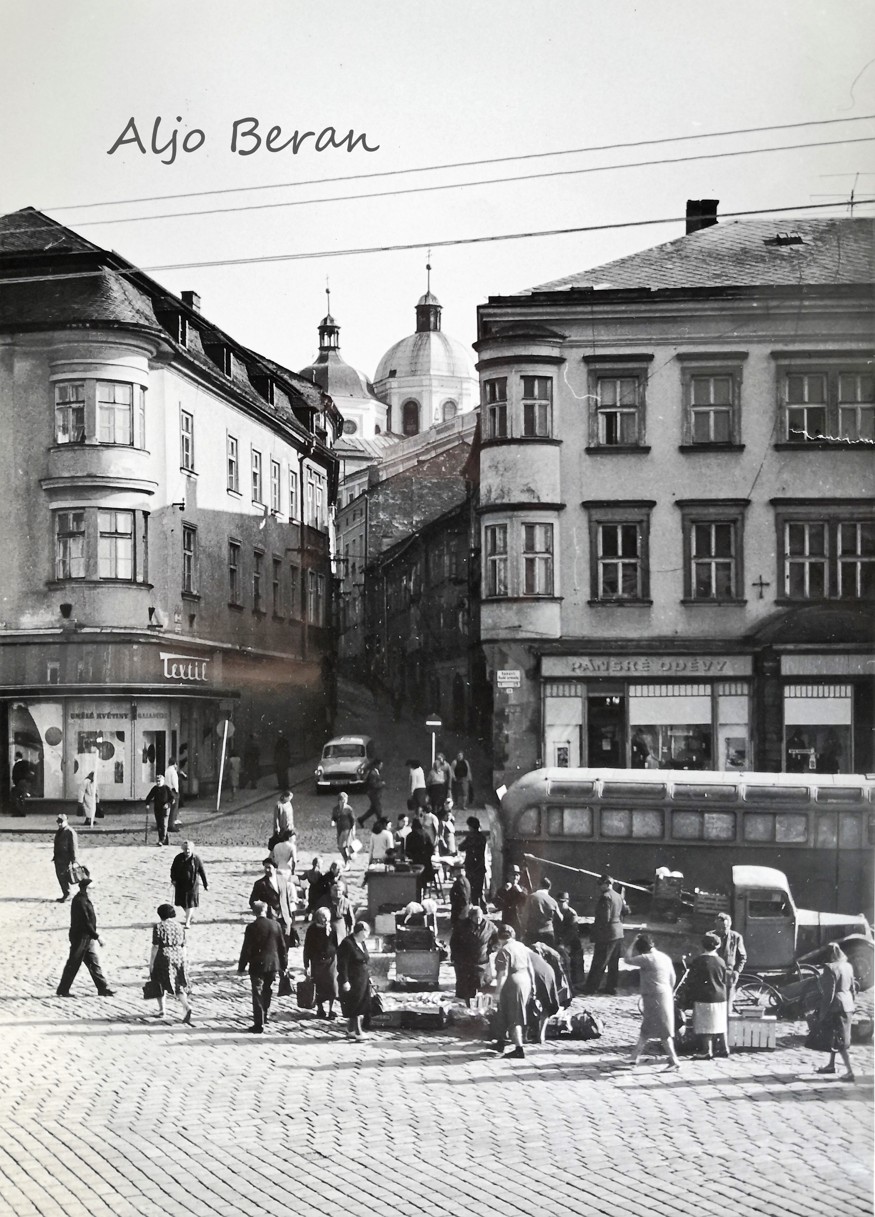
PALACKY UNIVERSITY

In the post-war years, Aljo Beran devoted a large amount of energy to the University of Olomouc, and actively participated in its reconstruction. For many years, he was the head of the Department of Art Theory and Education, where he taught students theoretical and practical skills of an artist. In addition to his pedagogical work, he actively participated in the creation of the university's insignia, and above all he created the university logo, which is still used today. In addition to organizational cooperation with the first rector of the renewed university, J. L. Fišer, he is also the author of his official portrait, which has become another important artefact commemorating the renewal of Olomouc's academic life and Beran's contribution to it.



